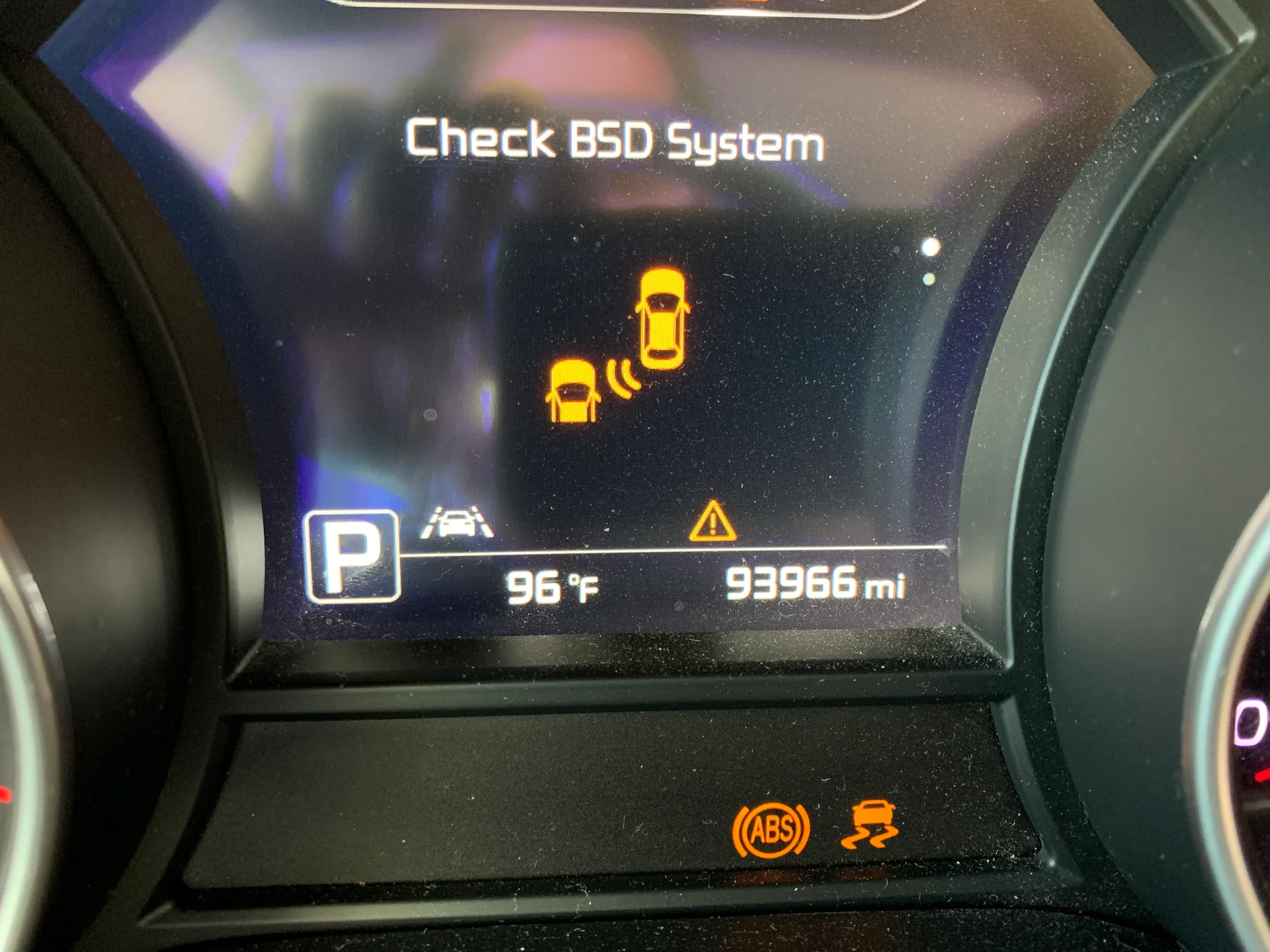


The "Check BSD System" warning on your vehicle's dashboard indicates an issue with the Blind Spot Detection (BSD) system, an advanced safety feature designed to enhance your awareness and prevent collisions. This comprehensive guide will help you understand the causes, diagnose the problem, and explore repair options to restore the system's functionality.

The BSD system uses radar sensors, typically located in the rear bumper, to monitor the blind spot zones on both sides of your vehicle. These sensors continuously scan for other vehicles, pedestrians, or obstacles that may be obscured from your view, alerting you through visual and audible warnings when potential hazards are detected.
| Component | Function |
|---|---|
| Radar Sensors | Emit and receive radio waves to detect objects in blind spots |
| Control Module | Processes sensor data and triggers warnings |
| Warning Indicators | Visual (side mirrors) and audible alerts notify the driver |
By providing an extra set of eyes, the BSD system helps reduce the risk of collisions during lane changes, merging, or backing up, ultimately enhancing your safety on the road.
Several factors can trigger the "Check BSD System" warning, including:
Sensor Damage or Obstruction
Minor rear-end collisions
Road debris
Accumulated dirt or snow
Wiring Issues
Loose connections
Damaged wiring
Electrical interference
Control Module Failure
Internal faults or failures
Software or Calibration Problems
Outdated software versions
Incorrect calibration settings
To address the warning effectively, proper diagnosis is essential. Here are the steps to follow:
Inspect the Rear Bumper Area
Look for signs of damage, obstructions, or debris near the sensor locations.
Scan for Diagnostic Trouble Codes
A qualified technician can retrieve trouble codes related to the BSD system.
Common codes include:
| Trouble Code | Description | |--------------|-------------| | P0628 | Left Rear Sensor Circuit | | P0629 | Right Rear Sensor Circuit | | C1234 | BSD Control Module Fault | | U1234 | BSD Software Error |
These codes provide clues about the specific component or system causing the issue.
Once the root cause is identified, several repair options are available:
Replacing Damaged or Faulty Components
Radar sensors
Wiring harnesses
Control modules
Software Updates and Recalibration
Installing the latest software version
Recalibrating the sensors for optimal performance
Regular maintenance is crucial for ensuring the long-term reliability of your BSD system:
Annual Inspections
Thorough examination of system components
Sensor Cleaning
Removing accumulated dirt or debris
Software Updates
Addressing known issues and improving performance
Professional technicians have the knowledge and tools to conduct comprehensive inspections and service, ensuring your BSD system operates at its best.
Many modern vehicles offer advanced BSD system features, such as:
Integration with other driver assistance technologies
Lane change assist
Rear cross-traffic alert
Automatic emergency braking
Customizable settings and preferences
Adjusting sensitivity levels
Enabling or disabling warnings
As technology advances, we can expect further improvements in BSD systems, including enhanced sensor capabilities, improved object recognition algorithms, and seamless integration with other advanced driver assistance systems (ADAS).
Addressing the "Check BSD System" warning promptly is essential for maintaining the safety and reliability of this crucial driver assistance feature. By understanding the potential causes, performing proper diagnostics, and implementing the appropriate repairs or updates, you can ensure your BSD system continues to provide valuable assistance during lane changes and backing maneuvers.
Remember, while advanced technologies like the BSD system are designed to enhance safety, they should never replace attentive and responsible driving practices. Always remain vigilant and exercise caution when operating your vehicle, especially in situations where blind spots may be present.
The Blind Spot Detection (BSD) system uses radar sensors to monitor the blind spot zones on both sides of your vehicle and alert you when potential hazards are detected.
Common causes include sensor damage or obstruction, wiring issues, control module failure, and software or calibration problems.
The issue can be diagnosed by inspecting the rear bumper area for damage or obstructions, and scanning for diagnostic trouble codes related to the BSD system.
Repair options include replacing damaged or faulty components (sensors, wiring, control modules), and performing software updates and recalibration.
Regular maintenance, such as annual inspections, sensor cleaning, and software updates, is crucial for ensuring the long-term reliability and optimal performance of the BSD system.
Advanced features include integration with other driver assistance technologies (lane change assist, rear cross-traffic alert, automatic emergency braking), and customizable settings and preferences.
The BSD system enhances driving safety by providing an extra set of eyes to monitor blind spots and alerting the driver to potential hazards during lane changes, merging, or backing up.
While the BSD system is designed to enhance safety, it should never replace attentive and responsible driving practices. Drivers should always remain vigilant and exercise caution, especially in situations where blind spots may be present.
The typical components of a BSD system include radar sensors (to detect objects), a control module (to process sensor data and trigger warnings), and warning indicators (visual and audible alerts).
Future developments may include enhanced sensor capabilities, improved object recognition algorithms, and seamless integration with other advanced driver assistance systems (ADAS).

Miguel started tinkering with car radios as a teenager, fascinated by the intricate dance of wires and circuits. This passion led him to pursue a career as an automotive electrician. For the past 10 years, Miguel has tackled everything from flickering headlights to mysterious electrical gremlins. He thrives on troubleshooting electrical problems and enjoys sharing his knowledge to empower car owners to understand their vehicles better.



